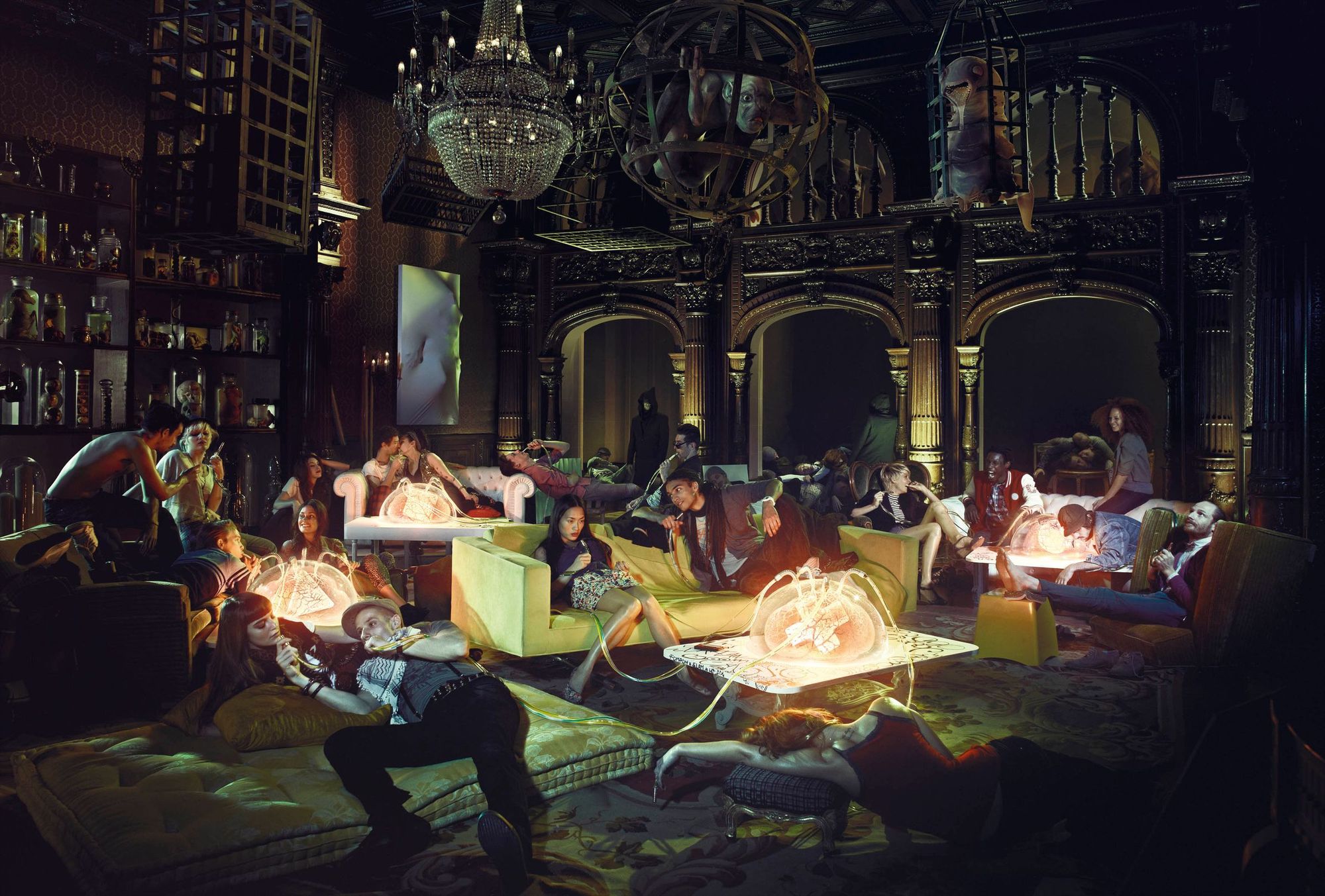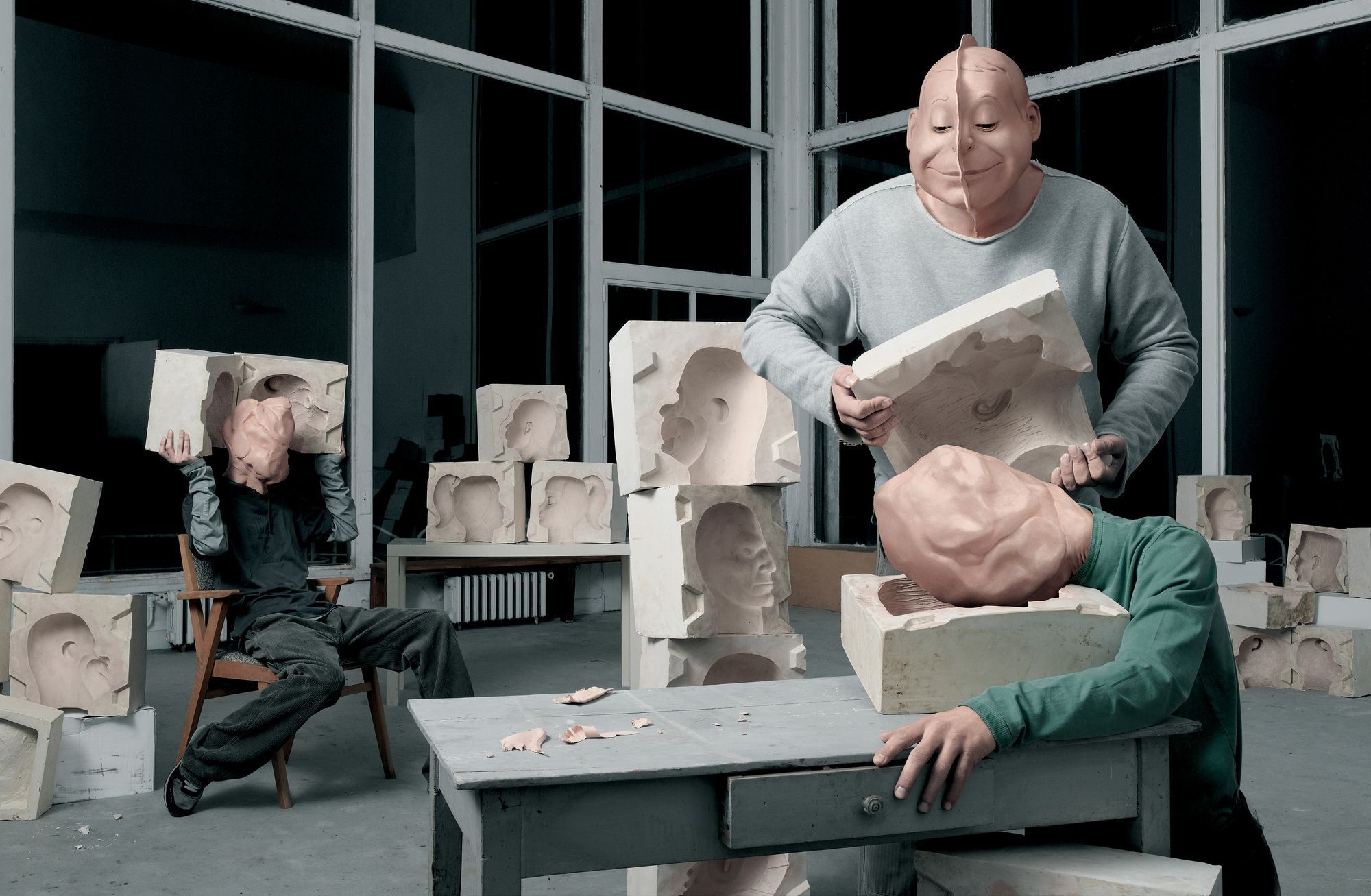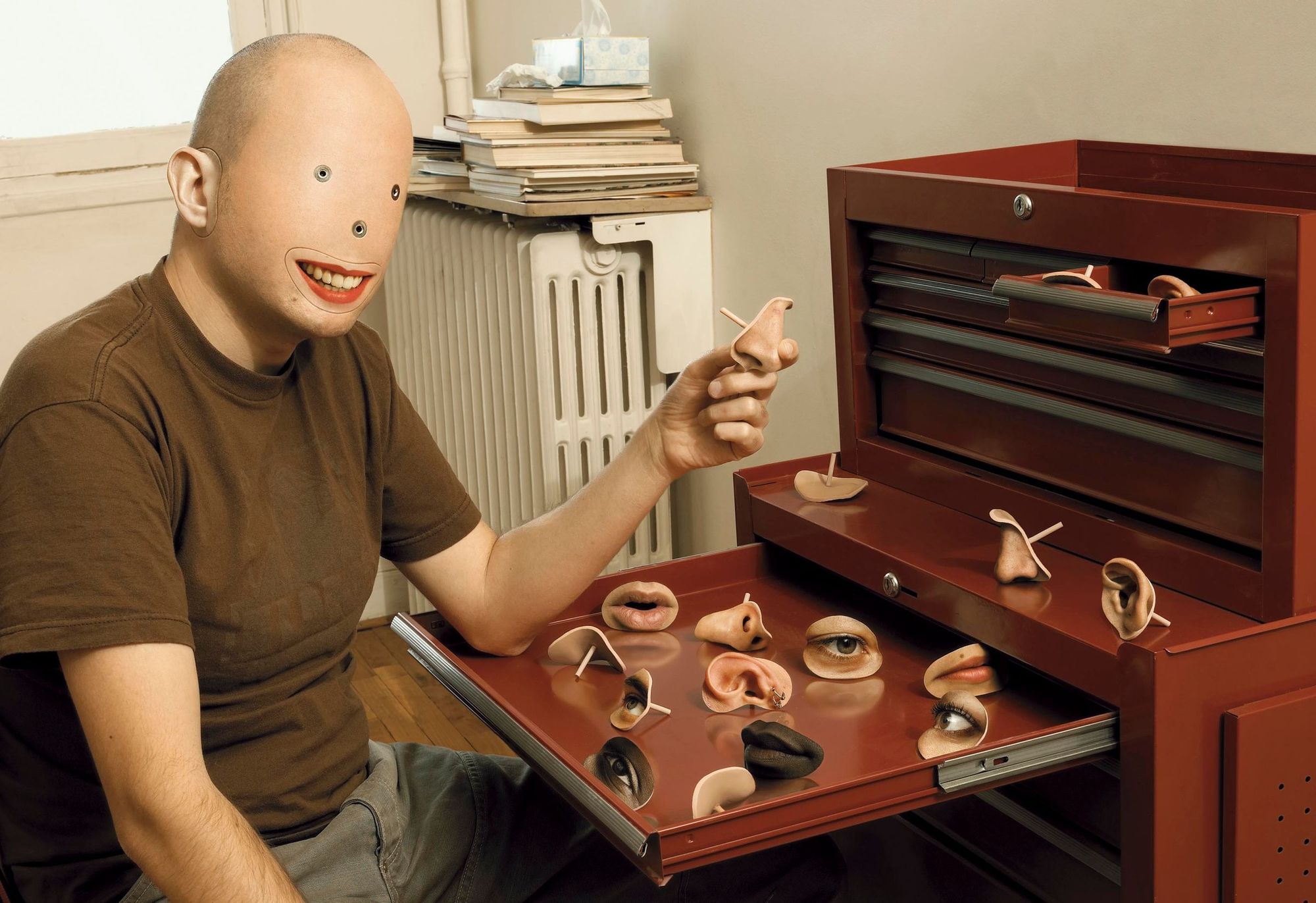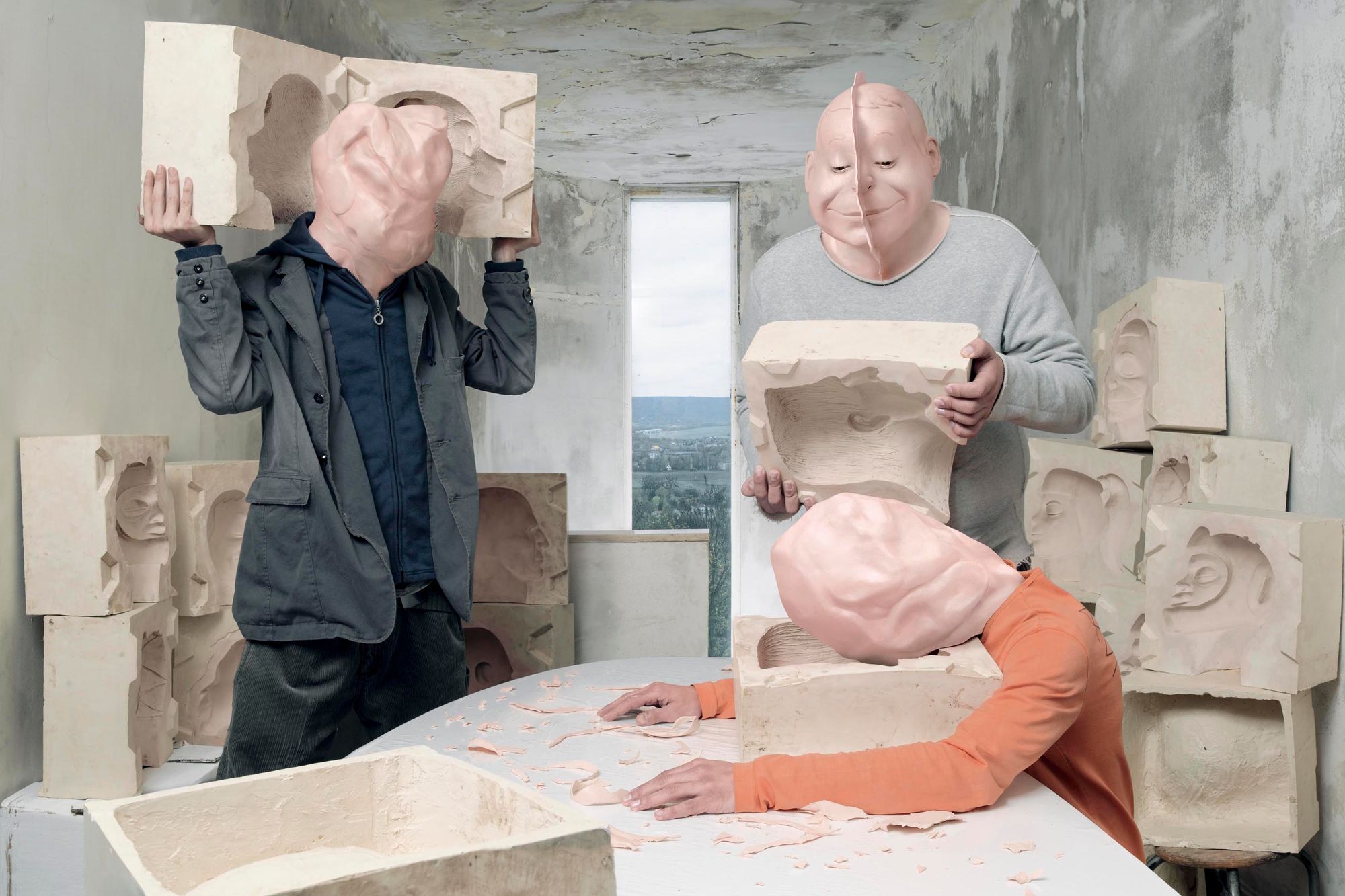From the heart of a vibrant world of artistic tradition, Dimitri Daniloff burst forth. The whispering languages of texture and matter were imbued in his consciousness as naturally as speech itself, his father, a master sculptor, his earliest mentor. As a burgeoning artist, Dimitri experimented with 4x5 view cameras, the allure of their mechanical precision and capability to seize pure reality was irresistible. Yet, his spirit, a living fire of creativity, craved more. It yearned for the uncharted territories.
This burgeoning digital landscape offered Dimitri an endless canvas, where he could redefine reality itself, melding raw elements with real-life subjects. His work, once an homage to the tangible, gradually transmuted into alien realms, balanced on the delicate threshold between real and surreal. His extraordinary campaign for PlayStation was the ultimate embodiment of this creative duality.
This dance with creativity led Dimitri to an intriguing intersection in his artistic journey. The year 2008 saw the birth of the avant-garde Virtual Girl project, an audacious collaboration with the iconic electronica duo, Daft Punk. This venture welcomed 3D elements into Dimitri's photographic oeuvre, presenting a riveting narrative of the augmented human.
His restless pursuit of innovation pushed him further into the arms of photogrammetry, a technique that breathed life into 3D models by measuring distances from myriad perspectives. A unique partnership with plastic artist Tamal De Canela birthed 'L’humain illimité' (The Unlimited Human), a groundbreaking project that married the virtual and the real. This creation, a virtual figure anchored to reality, bereft of physical limitations, oscillated between the mortal and the divine, challenging the confines of 2D imagery and provoking contemplation on the boundaries of human existence.
Dimitri's work became a resounding echo of Oscar Wilde's profound aphorism, "Man is least himself when he talks in his own person. Give him a mask, and he will tell you the truth." The subjects of his art bore masks as varied as their identities. His relentless pursuit of this artistic paradigm is more than a creative endeavor—it's a radical political act, illuminating the resilient spirit of humanity in the face of its own vulnerabilities.








A visionary in the realm of advertising and design, Dimitri's trailblazing insights have garnered a string of prestigious accolades, including Cannes Lions' Grand Prix, Gold, Silver, and Bronze, the Clio's Gold, Bronze, Silver, and Shortlist, as well as numerous nominations and accolades at the D&AD and Creative Circle Awards.
Dimitri's transformation from analog to digital was more than a technological transition—it was a quantum leap into a universe teeming with artistic possibilities. The logistical hurdles of 4x5 camera photography were replaced with the boundless potential of digital. With a world of choices at his fingertips, every shot was a deliberate decision, a testament to Dimitri's innovative vision.
Whether sculpting reality from raw elements or envisioning a unique depiction of augmented humanity, Dimitri's pioneering journey through the domains of digital art continues to evolve. Dimitri isn't merely a photographer—he is a narrative craftsman, an explorer of identities, a challenger of the human essence. His work stands as an embodiment of his creativity and a significant milestone in the ever-evolving landscape of digital art.
In Dimitri's hands, the camera lens transforms into a portal to a world where reality and surrealism converge, boundaries dissolve, and the mundane morphs into the extraordinary. His two-decade long artistic journey is an odyssey marked by relentless innovation and exploration.
A prime example of Dimitri's subtle yet profound impact is an episode at the 2014 London Music Week Awards. An iconic image he had shot with Daft Punk for Lemon Magazine ended up on David Bowie's Facebook page. Bowie was mistakenly identified as the one wearing Daft Punk's helmet in the photo, while Dimitri remained unrecognized. Dimitri took it as a double-edged sword—a testament to his work's wide appeal, yet a stark reminder of his underplayed presence in the industry.
Despite his creations being part of esteemed collections like the 'Fond des Musees de France' and included in photography school curriculums, Dimitri felt overshadowed by his own artistry. NFTs offered him a resolution, granting him an uncontestable claim over his works, cementing his authorship. Thus, he resolved to mint the Daft Punk series.
His knack for challenging norms led to an exceptional creation: a black female cyborg, inspired by renowned model Debra Shaw, meticulously reconstructed in 3D to incorporate mechanical elements. This was a pioneering feat in 2007 when 3D technology was a rare sight in photographic compositions.
Dimitri's foray into 3D imaging represented more than a dalliance with novel technology; it signified a seismic shift in his creative paradigm. He perceived 3D as a tool to shatter the confines of conventional photography and Photoshop, paving the way for his visions of a world where reality and surrealism coalesce.
Today, Dimitri is navigating new frontiers with photogrammetry, a technique merging photography and 3D scanning to form unique amalgamations of physical and digital elements. While the technology continues to evolve and brings with it its set of challenges, Dimitri revels in its imperfections. They remind him of the early days of black and white photography or Polaroids, their beauty lying in their quirks and idiosyncrasies.
Ultimately, Dimitri's quest isn't just about leveraging cutting-edge techniques; it's about continuously pushing his own boundaries, exploring new aesthetics, and relentlessly reinventing his craft. He is a visionary sculptor of realities, a silent sentinel pushing the boundaries of artistic expression, and a pioneer carving out new territories in the ever-evolving landscape of digital art.
The notion of photogrammetry being the future of photography doesn't just resonate with Dimitri; he lives it. The technique enables the conversion of physical assets into digital replicas by creating their digital twins. This process involves taking numerous images of an object and combining them to produce a 3D model, which then undergoes several stages of refinement before being exported to any 3D software.
Armed with his camera, Dimitri has held the world captive with his imagination for over two decades. His boldly audacious images for PlayStation, loved by the masses but deemed too audacious for Sony's boardroom, encapsulate Dimitri's journey as an artist—a relentless pursuit of the balance between creative liberty and commercial appeal.
This balancing act triggered Dimitri's shift from the rigid confines of commercial photography to a realm that offered a broader artistic canvas. His exploration into photogrammetry—a fusion of photography and 3D modeling—led him into uncharted artistic territories.
Even as he enjoyed commercial success in advertising, Dimitri yearned for more. This relentless curiosity led him to Barcelona, where he discovered a thrilling blend of interactive artistry, virtual reality, and 3D design. This newfound perspective led him back into advertising, albeit with a fresh, technologically-driven perspective, evident in his VR project for EDF and his collaboration with Lenovo.
Photogrammetry soon became Dimitri's primary focus, morphing into a two-fold mission for him. On one hand, he exploited it as a tool to create a groundbreaking style of digital art, showcased in an installation at the international photography and VR festival, Les Rencontres d’Arles. On the other hand, he launched a company offering comprehensive photogrammetry services.
Among Dimitri's most captivating projects is his creation of unique NFTs for Olympus DAO. This endeavor marries his passion for photogrammetry, art, and the synthesis of the physical and digital world. By digitally cloning 2000-year-old Roman statues, Dimitri hopes to loop back to the roots of artistic expression while simultaneously charting its evolution.
The notion of giving these Greek statues new textures is a visual metaphor for their transition from the physical to the digital world, bridging the apparent divide between the two. The statues he worked with were carefully handpicked from an antique store, and he spent two intense days scanning these remnants of antiquity.
The exhilaration of creating a digital clone of the statues was heightened by the uniqueness of the 3D models he crafted. These models exist exclusively in his archive, an exclusive asset that gives his work a singularly distinctive edge. Dimitri likens this revolutionary transformation ushered in by photogrammetry to the shift from analog to digital photography.
For Dimitri, photogrammetry is more than a technique; it's a medium to infuse depth and personality into his creations. It allows artists to imprint their unique touch on their works, breathing life into them with an essence that's impossible to replicate. The future of photogrammetry promises not only the creation of digital doubles but also new avenues of interactive 3D media.
His journey continues to challenge norms, redefine identities, and question the essence of what it truly means to be human in the digital era.
